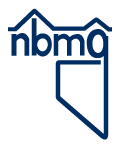Science of the Comstock - Environment
Home | Tour | Physics | Chemistry | Earth Science | Environment | Scams | Lesson Plans
Environment Topics:
Introduction
Urbanization
Mine Wastes
Influence of Mining
Urbanization
Introduction
The Comstock Lode greatly influenced urbanization both locally and regionally. Urbanization is the settling of the land by the creation of cultural infrastructure. This infrastructure includes such things as the building of mines, cities, communication lines, railroads, farms, roadways, and water and sewer lines.
Virginia City Develops
Prior to the discovery of the Comstock, the region was wilderness and the environment was practically pristine, although a small population of Native Americans subsistd on the land s hunters and gathers of local food. With the discovery of the Comstock there came a rapid urbanization of Virginia City and its adjoining areas of influence. Soon after its discovery the Comstock became the site of massive industrial complexes, while Virginia City became the largest city in the region. Great impacts were made on what was once the wilderness. See also a discussion of the influence of mining the Comstock just on materials supply in the area.
Much of the wealth won from the Comstock was used to build up such far away places as San Francisco. The impact that the Comstock had on urbanization was far reaching. The cultural benefits of this urbanization are still present but largely taken for granted. The image to the right is the boardwalk at Virginia City, today a major tourist attraction which benifits from the unique infastructure that exists at Virginia City.
Impact of the Mining of the Comstock
Resource extraction on the Comstock was limited and regulated by the natural world itself. The newly developed land and its ore deposits were great, but not inexhaustible; the resources had limitations. The impact that the Comstock had on the environment can be compared to the different stages of a skyrocket. First, great resources were assembled at other places. Energy and resources had to go into making the actual rocket at one place; in this case, people picked up their belongings and assembled those things they needed to get to the Comstock. Next the rocket was lit and great energy was tapped to get it to its destination; people mobilized in a great rush to get to the Comstock. When the rocket explodes, the site is spectacular. Sparks catch and wildfire spreads. Then finally the spent rocket lies in the dirt and slowly weathers away, surrounded by a burned landscape. Slowly the land heals and repairs are made by nature itself. Such was what happened at the Comstock, the deposit itself was found in a region containing fertile valleys and forested mountains. Exploitation of these resources set in like wildfire. Agricultural communities sprang up to feed the Comstock. Logging communities were established to feed the timber needs of the mines. Railroads and roads were built to transport supplies and goods into the mining camp from far away places. See also the QTVR tour of the Virginia City area.
Mining and Development of the West
Urbanization occurred throughout the American West in a repeated pattern. In the latter half of the 1800s, the earliest urbanization of a region usually had its impetus from mining. As the mines became established, new markets became available for lumber and farm products that had not existed before. Agricultural and logging communities sprang up on the heels of mining towns. Transportation and communication systems next developed, then major distant cities grew to service the multifaceted economic environments that had grown in the city's sphere of influence. Early urbanization created by the Comstock as well as the many other mining towns throughout the American West provided the base upon which our current infrastructure developed. Now many can comfortably enjoy modern civilization where a century and half ago there was wilderness and desert that was capable of supporting many fewer people than today.


 Home
Home